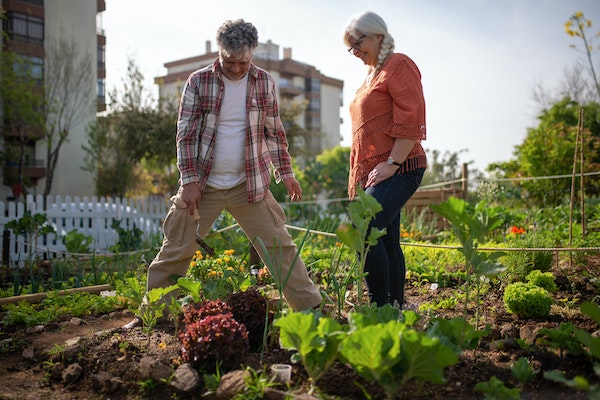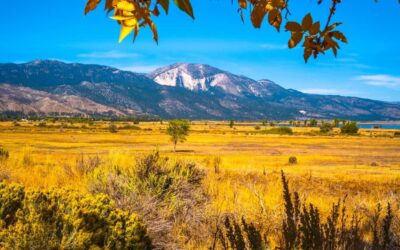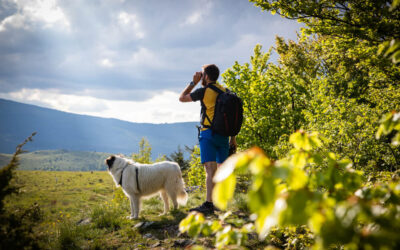What is the planting zone for plants in Reno, Nevada?
USDA Hardiness Zone maps determine which planting zones best suit certain plant species. The maps account for each zone’s average annual minimum temperature to show which areas of the country are most likely to be hospitable for a given type of plant. Using these maps, gardeners and farmers can choose plants with the best chance of thriving in their particular location.
The planting zone for plants in the Reno area is 7a. This means that these plants can withstand temperatures between 0°F (-18°C) and 45°F (7°C).
What climate is Reno, Nevada?
Reno, Nevada, has a climate and average weather that changes throughout the year. Reno is hot and dry in the summer, with mostly clear skies. However, winters in Reno are very cold, with lots of snowfall and cloudy skies.
Reno, Nevada, is located in western Nevada, and the temperature ranges from 23F to 90F throughout the year, with very rare falls below 13F. Reno’s location allows it to have a more diverse climate than other parts of the state.
Can you grow a garden in Reno?
Reno’s short growing season lasts approximately 135 days. Gardeners who want to grow a fall garden must move quickly, preferably in July or August. This is because the growing season in Reno is much shorter than in other parts of the country.
Various veggies can be started indoors in July and then transplanted outside in early to mid-August, depending on the conditions. By starting them indoors first, the plants will have a head start on the growing season and be better able to withstand the challenges of being transplanted.
In late August and early September, you can plant various vegetables that will grow well in the hot, dry conditions of late summer and fall. This includes tomatoes, cucumbers, peppers, eggplants, squash, peas, beans, onions, turnips, radishes, leeks, rutabagas scallions, spinach, watermelon, zucchini, or any other vegetable.
Selecting Plants For Northern Nevada
Before you can discover which plants grow best in northern Nevada, you must first consider the area’s conditions. Northern Nevada generally has a higher fire danger than other parts of the state, so you’ll need to select plants that can withstand these conditions.
Northern Nevada conditions
In Northern Nevada, gardening can be challenging due to the high desert region’s climate. Temperature fluctuations, combined with the area’s drought and soil conditions, must be taken into consideration by gardeners to be successful. Expect extreme temperatures, low humidity, strong winds, and clay-rich soils. These conditions are not good for plant development and health.
It’s important to know the hardiness of your plants to select ones that can thrive in your location’s conditions. The hardiness zone is a great way to determine which plants can withstand the climate where you live. By choosing appropriate plants for your area, you can ensure they will have a better chance of surviving and flourishing.
You may come across the terms drought-tolerant and desert-wise plants simultaneously. Desert-wise plants are those that can survive in arid conditions with little water, while drought-tolerant plants are those that can withstand prolonged periods of dryness.
Instead of struggling to keep your plants alive in a dry climate, choose desert-wise or drought-tolerant plants designed to thrive in these conditions. When purchasing plants, look for those with labels indicating that they are desert-wise or drought-tolerant to ensure that they will be able to thrive in the northern Nevada climate.
In addition, because the temperature in northern Nevada can occasionally reach 10°F, it is best to stick to plants that are known to be able to survive in such extreme conditions.
High fire hazards
Gardening in the desert can be challenging since you must select fire-resistant plants. Since there are no plant ratings for fire resistance, this can be challenging. Instead, you must choose plants that will not pose a major fire risk.
According to the University of Nevada Cooperative Extension, the moisture level and plant development habits might influence how deadly fire is. If a plant grows in a way that permits flames to grasp quickly, it may offer a larger risk during a wildfire. Instead of the opposite, you want to choose crops with high moisture content and a low growth tendency. Succulent and herbaceous plants and shrubs no taller than 2 feet are recommended.
Succulent and herbaceous plants usually have a high moisture content. This includes perennial and annual flowers, ground coverings, grasses, and bulbs. However, as they dry out, you must keep an eye on them and remove the top growth. Deciduous woody plants have a higher moisture level than evergreen woody plants and, if not monitored, can pose a fire threat.
Another method for preventing fire is to prune and maintain bushes less than 2ft tall. They consume less fuel and produce shorter flames than taller plants, making them much safer. When landscaping, it is important to be aware of the combustible elements in some plants, such as evergreen woody plants. Taking these dangers into account, you can help create a safe and enjoyable outdoor space for your family and friends.
Conclusion
Gardening in northern Nevada can be difficult due to the environment and conditions. However, understanding the northern Nevada gardening guide, such as plant selection and what grows well in this region, will simplify gardening. If you plan to plant any vegetables or flowers, it is important to know the frost-free dates for Reno and Las Vegas. This way, you can ensure that your plants will be safe from frost or cold weather. Knowing the frost-free dates allows you to sow your plants without worrying about them being damaged by the cold.
According to the University of Nevada, Reno, using a greenhouse will result in thriving gardens in Nevada. Greenhouses provide an ideal environment for plants, protecting them from inclement weather and pests. Learn about your crops’ needs, your region’s hardiness zone, and Nevada-friendly methods. These suggestions can help you have a successful garden in northern Nevada.





